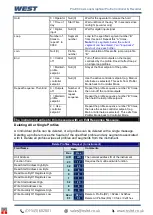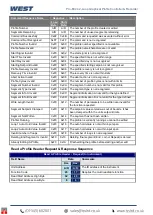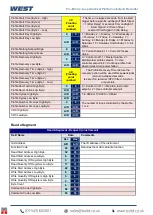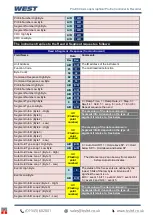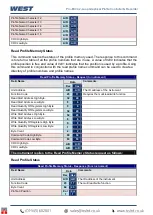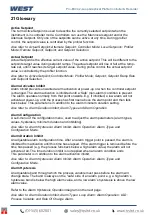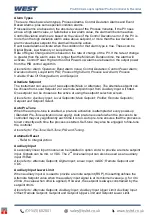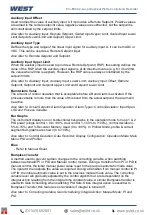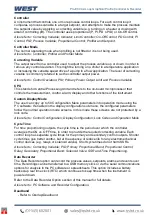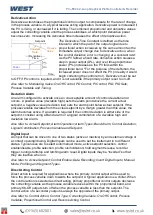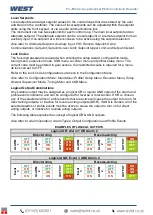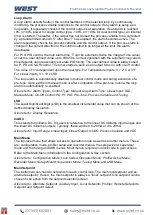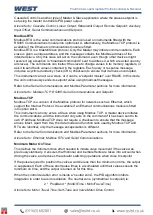
Pro-EC44 2-Loop Graphical Profile Controller & Recorder
Pro-EC44 Product Manual - 59540-2 September 2014
Page 204
21 Glossary
Active Setpoint
The term Active Setpoint is used to describe the currently selected setpoint when the
instrument is in controller mode. Controllers can use the Main local setpoint and/or the
Alternate Setpoint. Only one of the setpoints can be active at any time. During profiler
control, the setpoint value is controlled by the profiler function.
Also refer to: Actual Setpoint; Alternate Setpoint; Controller Mode; Local Setpoints; Profiler
Mode; Remote Setpoint; Setpoint; and Setpoint Selection.
Actual Setpoint
Actual Setpoint is the effective current value of the active setpoint. This will be different to the
setpoints target value during setpoint ramps. The actual setpoint will rise or fall at the ramp-
rate set, until it reaches its target setpoint value. During profile control, the actual setpoint
value is controlled by the profiler function.
Also refer to: Active Setpoint; Controller Mode; Profiler Mode; Setpoint; Setpoint Ramp Rate
and Setpoint Selection.
Alarm Activation Inhibit
Alarm Inhibit prevents unwanted alarm activation at power-up or when the controller setpoint
is changed. The alarm ac
tivation is inhibited until a ‘Safe’ (non-alarm) condition is present.
The alarm operates normally from that point onwards. E.g. if inhibited, a low alarm will not
activate at power-up, until the process has first risen above the alarm point and then falls
back below. This parameter is in addition to the alarm minimum duration setting.
Also refer to: Alarm Duration Inhibit; Alarm Types and Alarm Operation.
Alarm Configuration
A sub-menu of the configuration menu, used to adjust the alarm parameters (alarm types,
values, hysteresis, minimum duration and inhibiting).
Also refer to: Alarm Hysteresis; Alarm Inhibit; Alarm Operation; Alarm Types and
Configuration Mode.
Alarm Duration Inhibit
An adjustable alarm configuration time. After an alarm trigger point is passed, the alarm is
inhibited from activation until this time has elapsed. If the alarm trigger is removed before the
time has passed (e.g. the process falls back below a high alarm value) the alarm will not
activate at all. The time duration inhibit is not applied when an alarm condition ends.
This parameter is in addition to the alarm activation inhibit.
Also refer to: Alarm Hysteresis; Alarm Inhibit; Alarm Operation; Alarm Types and
Configuration Mode.
Alarm Hysteresis
An adjustable band through which the process variable must pass before the alarm will
change state. The band is always on the “safe” side of an alarm point, e.g. a high alarm’s
hysteresis band is below the high alarm value, and a low alarm’s hysteresis is above the low
alarm value.
Refer to the
Alarm Hysteresis Operation
diagram on the next page.
Also refer to: Alarm Duration Inhibit; Alarm Types; Loop Alarm; Alarm Operation; LSD;
Process Variable; and Rate Of Change Alarm.
Summary of Contents for Pro-EC44
Page 1: ...Pro EC44 2 Loop Graphical Profile Controller Recorder Pro EC44 User Guide 59540 2 ...
Page 2: ......
Page 6: ......




